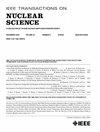Dynamic Hardware Defense for High-Centrality Nodes in Graph Convolutional Networks
IF 1.9
3区 工程技术
Q3 ENGINEERING, ELECTRICAL & ELECTRONIC
引用次数: 0
Abstract
With the growing reliance on graph data processing in safety-critical applications, ensuring the reliability of graph convolutional network (GCN) hardware systems has become paramount, especially in radiation-prone environments where single-event upsets (SEUs) pose significant risks. This article presents a comprehensive design framework for a fault-tolerant GCN system, addressing the unique challenges of SEU susceptibility through a novel fault-aware centrality measure and a dynamic hardware defense (DHD) strategy. Our approach begins with the development of a fault-aware centrality measure to precisely model the distribution of critical nodes within graph data. Leveraging this measure, we design a DHD strategy that integrates partial circuit reinforcement and high-centrality node marking, which dynamically route the dataflow of the most influential nodes in the graph to reinforced circuit units. The proposed system architecture is rigorously validated through extensive experiments, demonstrating significant improvements in fault tolerance. Specifically, the DHD strategy achieves improvements in hardening efficiency of图卷积网络中高中心性节点的动态硬件防御
随着安全关键型应用对图形数据处理的日益依赖,确保图形卷积网络(GCN)硬件系统的可靠性变得至关重要,特别是在单事件干扰(seu)构成重大风险的辐射易发环境中。本文提出了一个容错GCN系统的综合设计框架,通过一种新颖的故障感知中心性度量和动态硬件防御(DHD)策略来解决SEU易感性的独特挑战。我们的方法首先是开发一种故障感知的中心性度量,以精确地模拟图数据中关键节点的分布。利用这一措施,我们设计了一个集成了部分电路增强和高中心节点标记的DHD策略,该策略将图中最具影响力节点的数据流动态路由到增强的电路单元。提出的系统架构通过大量的实验得到了严格的验证,证明了在容错性方面的显着改进。具体来说,与传统的全三模冗余(FTMR)策略相比,DHD策略的硬化效率分别提高了2.53倍、2.70倍和2.85倍。中子辐射测试进一步验证了系统的鲁棒性,显示出在极端条件下有效减缓故障传播。通过保持最小的硬件开销并提供动态、经济高效的保护,该设计框架为在安全关键应用中部署GCNs提供了可靠的解决方案。
本文章由计算机程序翻译,如有差异,请以英文原文为准。
求助全文
约1分钟内获得全文
求助全文
来源期刊

IEEE Transactions on Nuclear Science
工程技术-工程:电子与电气
CiteScore
3.70
自引率
27.80%
发文量
314
审稿时长
6.2 months
期刊介绍:
The IEEE Transactions on Nuclear Science is a publication of the IEEE Nuclear and Plasma Sciences Society. It is viewed as the primary source of technical information in many of the areas it covers. As judged by JCR impact factor, TNS consistently ranks in the top five journals in the category of Nuclear Science & Technology. It has one of the higher immediacy indices, indicating that the information it publishes is viewed as timely, and has a relatively long citation half-life, indicating that the published information also is viewed as valuable for a number of years.
The IEEE Transactions on Nuclear Science is published bimonthly. Its scope includes all aspects of the theory and application of nuclear science and engineering. It focuses on instrumentation for the detection and measurement of ionizing radiation; particle accelerators and their controls; nuclear medicine and its application; effects of radiation on materials, components, and systems; reactor instrumentation and controls; and measurement of radiation in space.
 求助内容:
求助内容: 应助结果提醒方式:
应助结果提醒方式:


